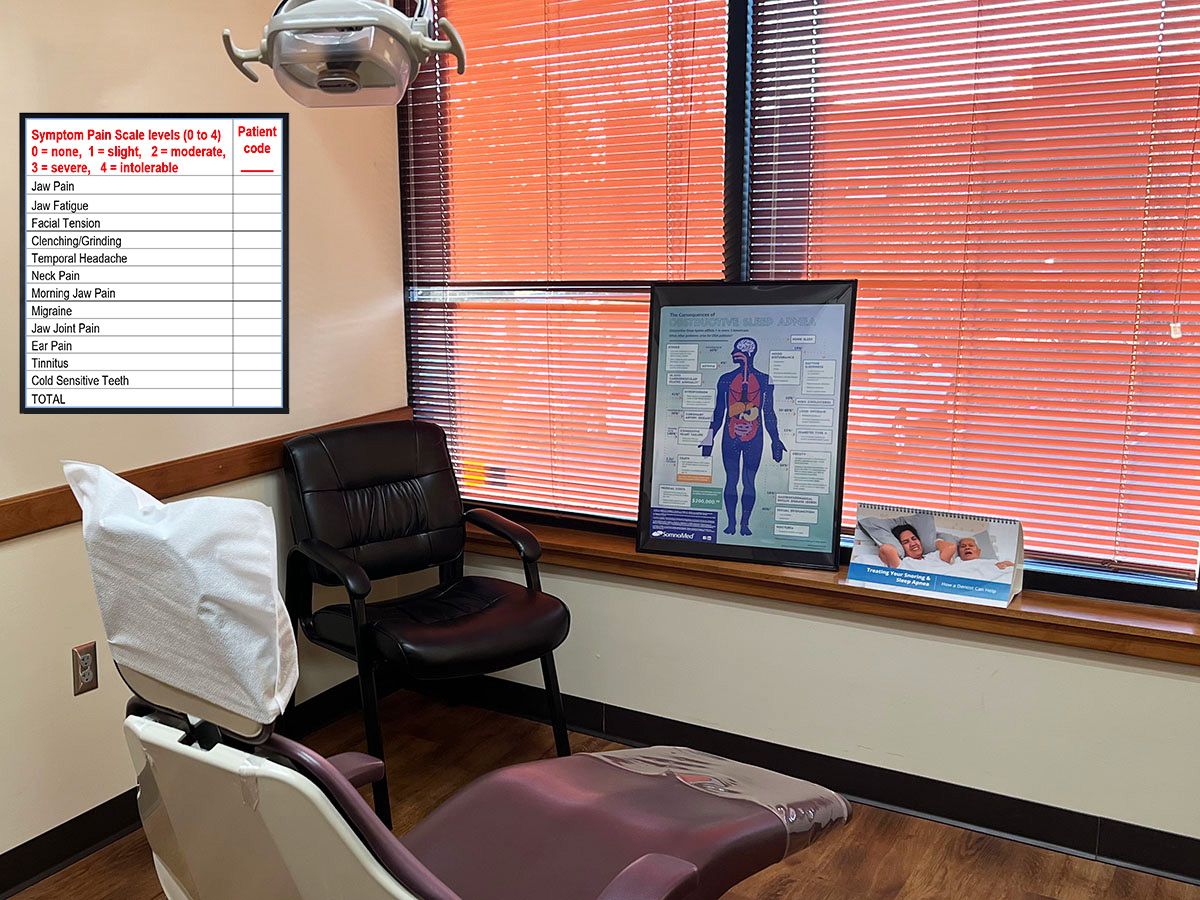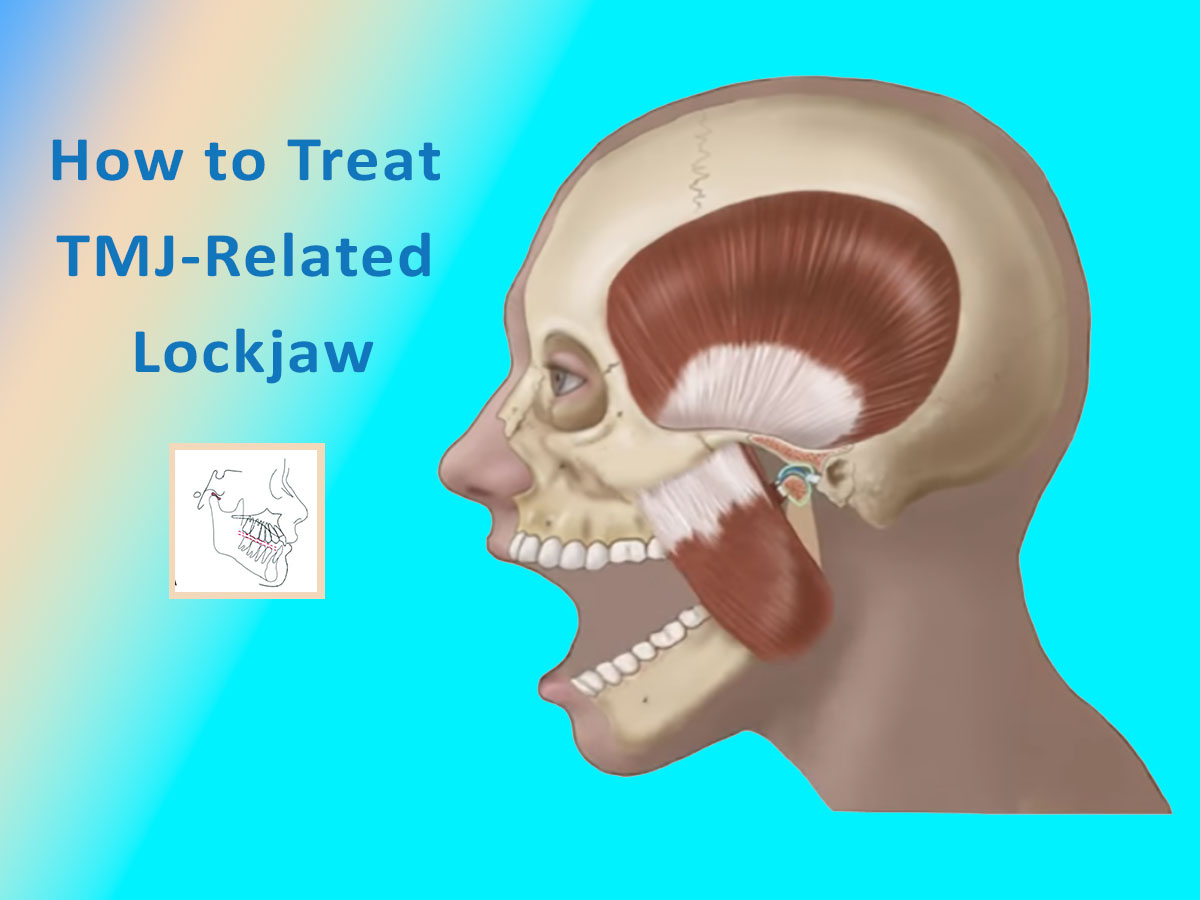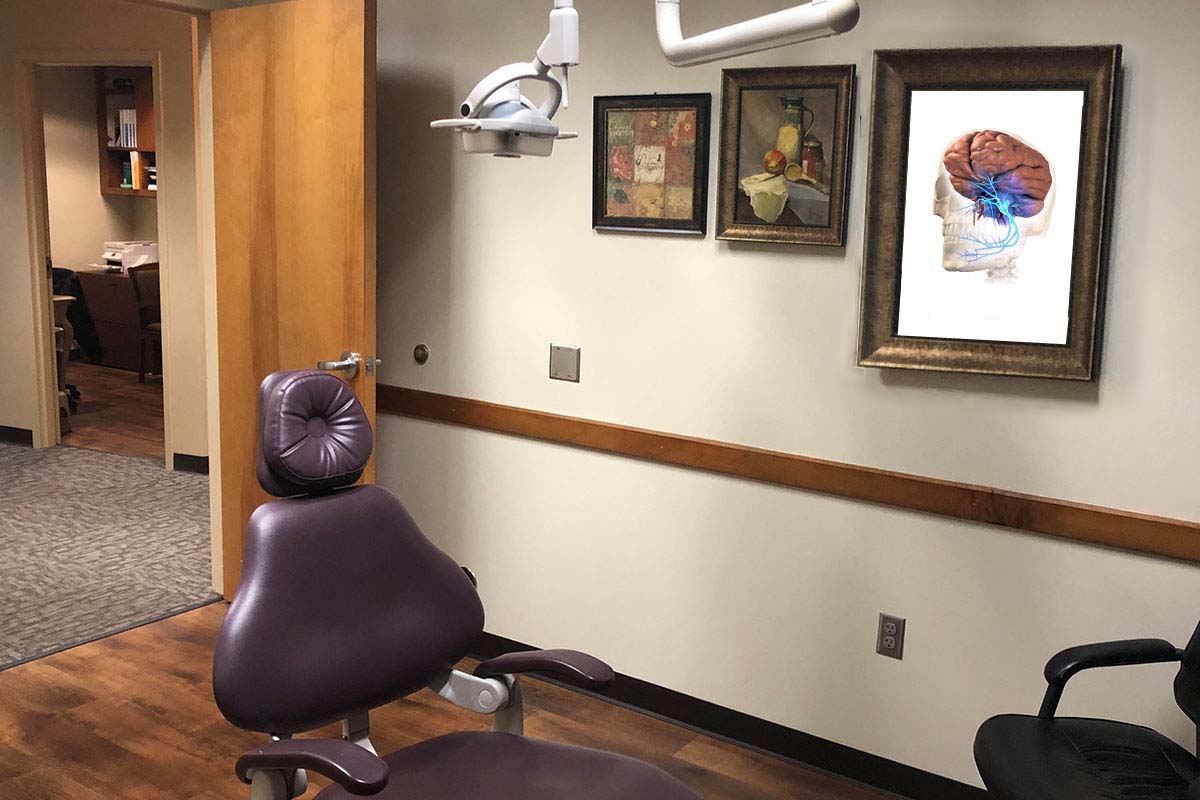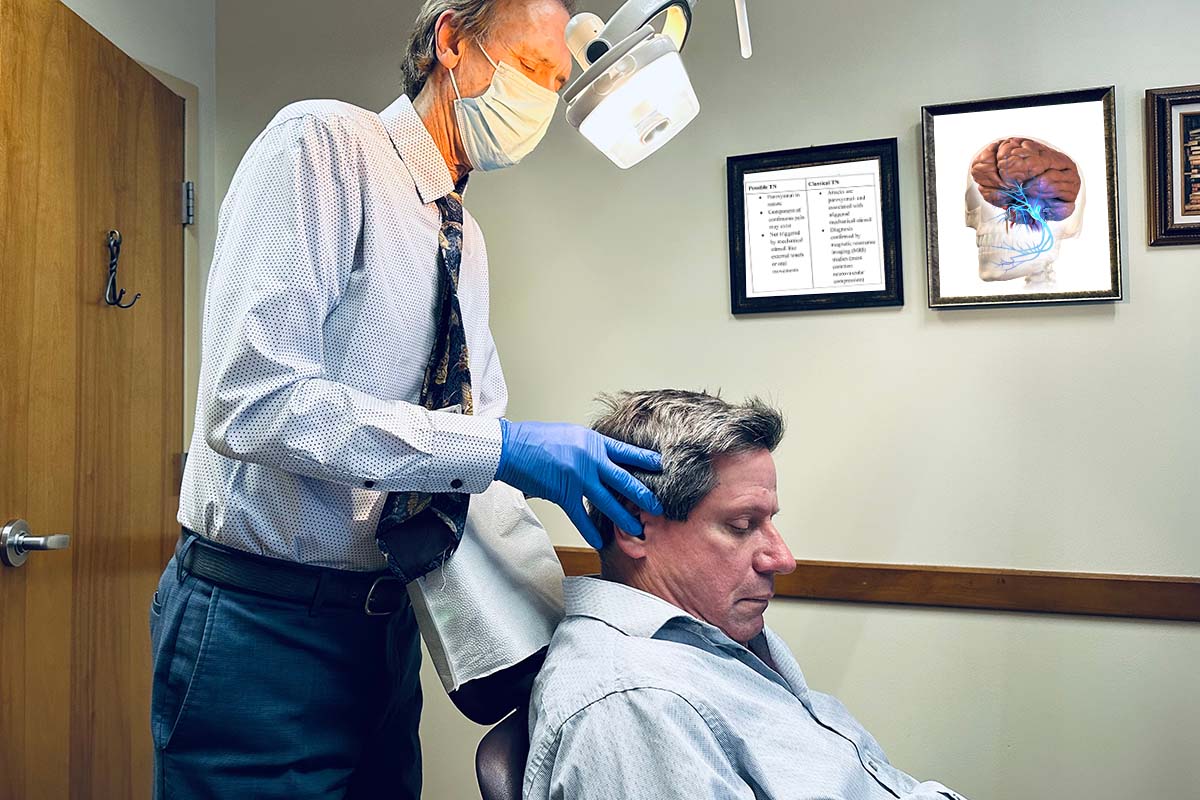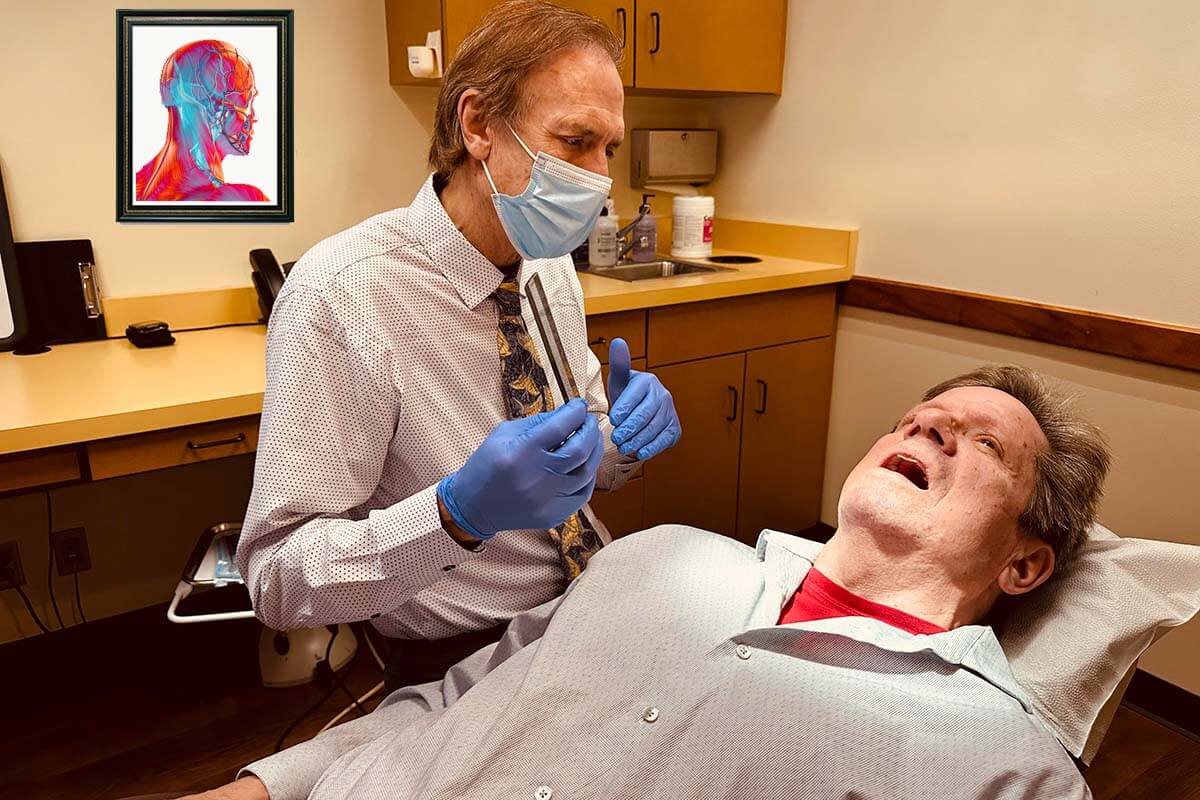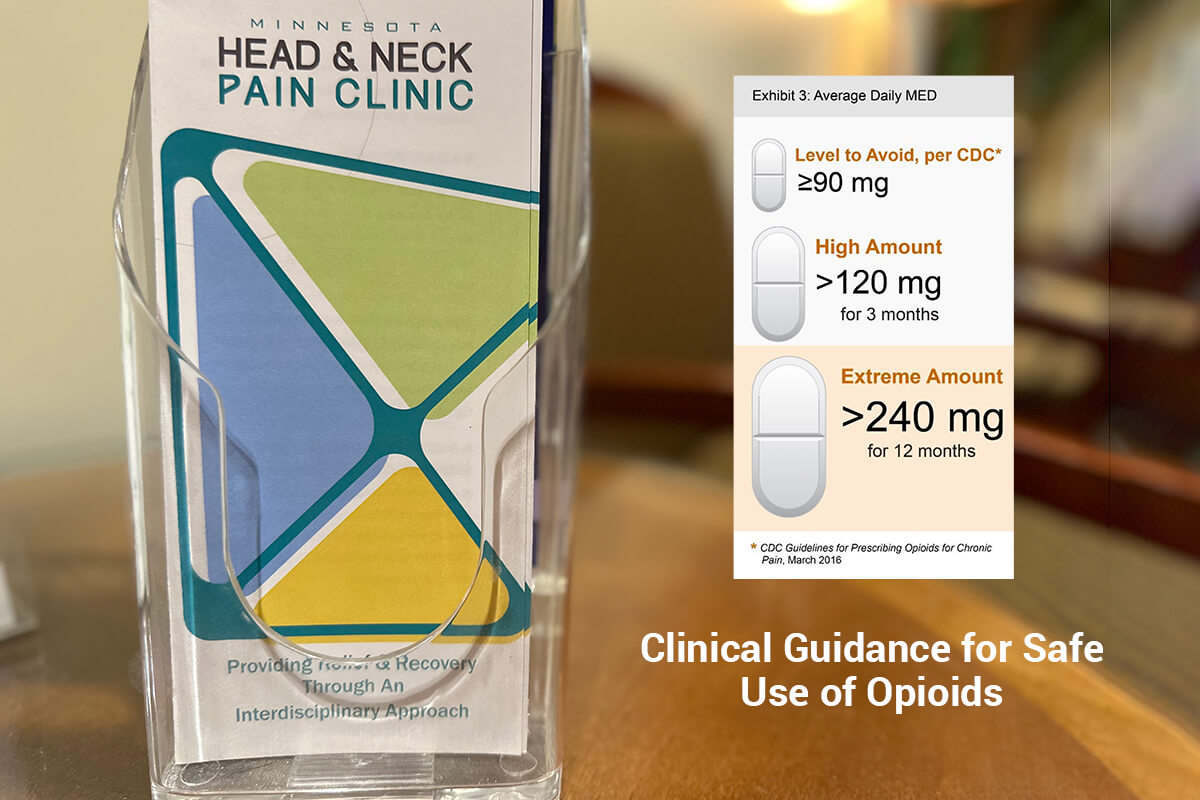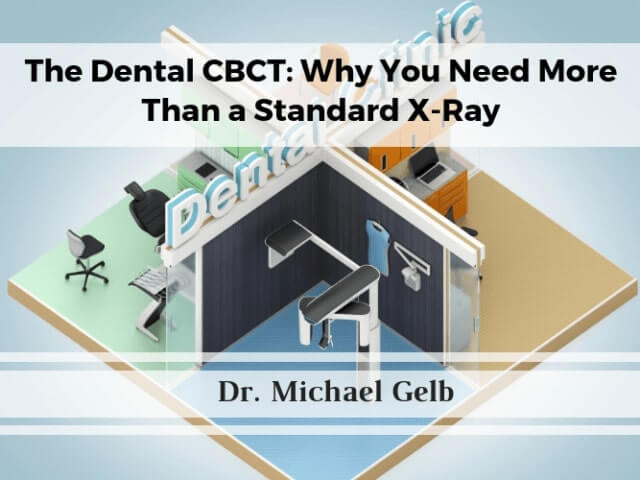Progress in Evidence-Based TMD Treatments: efficient early intervention helps deter TMD's development; and today, new studies support a comprehensive TMD pain management approach involving evidence-based treatment. Eric Schiffman, DDS MS, a Minnesota Head & Neck Pain Provider, was the main author of Diagnostic Criteria for Temporomandibular Disorders (DC/TMD) for Clinical and Research Applications: recommendations of the International RDC/TMD Consortium Network and Orofacial Pain Special Interest Group.
NEWS
TMJ Neck Pain: Causes, Treatment, and Prevention: Pain and tender points in the neck are common in individuals suffering from temporomandibular disorders (TMD). Treatment of jaw, neck, and orofacial pain remains a significant challenge for many healthcare providers. Clinicians must distinguish the type of pain and the probable cause of the pain to offer patients a comprehensive pain treatment plan. This article will look at how TMJ can be associated with neck pain and how to treat it.
The severity of temporomandibular joint (TMJ) disorder impacts a patient’s level of pain experience and which TMJ treatment plan is recommended. The pain clinician’s skill lies in identifying the type of jaw dysfunction, probable cause, and the most conservative, effective treatment to reduce pain levels. Often, when a person is diagnosed with TMJ pain, some of the first questions are around how severe the TMJ pain may become, how quickly we can help lower their pain levels, and if this pain can be completely overcome. None of us like feeling “pain,” so we regard these as important questions to answer.
How to treat TMJ-related jaw locking up issues. Jaw locking is a common symptom of a TMJ problem, although a locked jaw sensation does not always accompany TMJ disorders or TMD. As well it can be a symptom of tetanus. This can cause confusion for people suffering from jaw pain. Patients often describe it as feeling like limited or restricted mouth opening, "jaw locking" or "jaw tension."
Non-surgical TMJ Treatments are the New Standard. The first treatment of choice for temporomandibular joint (TMJ) problems should avoid irreversible surgical treatments. Arthrocentesis occurs in three steps: forcing apart the joint constituents, washing away inflammation and degradable products, and eliminating intra-articular effusion to decrease intra-articular pressure, control pain, and improve function.
What is the Link Between TMJ Pain and Sleep Apnea? TMJ pain that impacts your ability to sleep well may lead to poor sleep quality. So, what exactly is the “link”? How does TMJ affect OSA? Sleep apnea can also lead to poor sleep quality, which can affect TMJ pain and other chronic pain conditions. Your overall health can be impacted by either TMJ or OSA; however, having both can greatly impact your daily lifestyle. Using a combination of treatments, the MN Head & Neck Pain Clinics can align the jaw to clear obstructions and strengthen jaw muscles to boost your long-term comfort.
Do you need Myofascial Release Treatment for TMJ Pain? The myofascial system contains the nervous, vascular tissue, and the lymphatic system, which is why it can influence your level of TMJ pain and overall well-being. This helps explain why myofascial release can be so beneficial.
Trigeminal Neuralgia's Association with TMJ. How is the Trigeminal Nerve Associated with TMJ? TMJ vs. TN: How to Know the Difference?
Sports-related injuries and TMJ Pain. How sports-triggered teeth clenching can lead to jaw pain. Athletes frequently have chronic pain issues. The health risks athletes face when playing contact sports. Learn about the risks of temporomandibular dysfunction among athletes. Sports-triggered teeth clenching and jaw pain
Can bruxism cause headaches and neck pain? Helping your jaw move into its optimal position may alleviate most TMJ headache problems. Correcting your temporomandibular joint and helping your jaw move into its optimal position may alleviate most headache problems related to TMJ, muscle, nerve, and joint disorders.
Musculoskeletal conditions are often myofascial pain related vs non-specific neck pain and can be better diagnosed. Patients with reported neck pain and tenderness upon palpation were found frequently in patients with all COPC musculoskeletal pain. Learn how our clinics can provide you with the best management of musculoskeletal conditions to reduce your neck pain.
How SSRIs can Trigger Teeth Grinding and Bruxism - Research surfaces the surprising link between using antidepressants and teeth grinding. Bruxism is a common jaw movement disorder characterized by repetitive clenching of the jaw and grinding of the teeth. Sleep bruxism is typically associated with lateral teeth grinding and significant wear on the teeth. Patients often complain of jaw pain, headaches, and tightness of the jaw when awakening, and are unaware that they are grinding and jaw clenching during their sleep. Bruxism can also occur while awake during the day.
Trigger Point Injections effectively treat the common cause of persistent pain in the jaw, neck, shoulder, back, and other areas of the body. A trigger point injection (TPI) is used as effective primary or supplemental therapy aimed at decreasing persistent pain and tightness in the musculoskeletal system. Additionally, they may be used to relieve chronic headaches associated with TMJ, migraine, and other head and neck pain conditions. But what exactly are they, and how do you know if you’d benefit from this treatment? This article will answer your questions.
Patients with Painful TMD often experience a decline in their sleep quality. A sleep evaluation is an important part of comprehensive treatment for TMD. Patients with chronic pain experience poorer sleep than healthy individuals. Sleep latency, sleep efficiency, trouble breathing during sleep, and awakenings after sleep onset can all contribute to worsening pain levels. A sustained lack of quality sleep is known to trigger higher pain levels in TMD patients.
What is a pain health coach? A pain health coach assists in preventive care for pain issues and avoiding possible addiction during pain treatment. They are compassionate and relatable professionally trained individuals in personal wellness coaching. It takes courage and a strategic plan to defeat chronic pain. Our professional staff and healthcare coaches understand the trenches of chronic pain. A pain health coach empathizes with people suffering from pain and is passionate about helping them thrive despite the pain and lessen its impact. We will walk beside you as you discover your own courage and path to recovery.
Neck pain is commonly associated with repetitive strain and head and neck postural impairments. It is one the most frequent type of chronic pain complaints and is a costly public health issue that is a best addressed early in its onset. While multiple factors may trigger this condition, often its cause comes down to forward head poor posture and tensing the neck and shoulders. Let’s answer the question upfront about if poor posture causes neck pain.
What to Do if You Have a Pulled Jaw Muscle? A pulled jaw muscle if often an unexpected occurrence. It can trigger pain on an otherwise normal day. How do Orofacial Pain Specialists Treat Strained Jaw Muscles? When a jaw muscle is pulled or severely strained, an Orofacial Pain Specialist will establish an individualized treatment plan after diagnosing the jaw muscles and fibers in the damaged tissue. In addition to treating the pain, they will also seek to determine what caused the immediate jaw pain, inflammation, and swelling. They will treat pain resulting from trauma to the jaw.
Is Heat or Ice Better for Jaw Pain? Whether heat or cold will help you more may depend on the source of your jaw pain. TMD symptoms can be challenging to manage. If you struggle with finding jaw pain solutions, you should know the risks if left undiagnosed and treated. Many try to manage pain by using a home remedy. This may be a place to start but when more relief is needed in the long run - be quick to seek professional help. People with a temporomandibular joint disorder, or TMJ for short, are all too familiar with jaw pain. If you don't have a diagnosis yet and you’re at home or at work needing your jaw to stop hurting, you may reduce temporary jaw discomfort with the simple home remedy of applying hot or cold compresses. Let’s answer common question about if and how hot and cold packs work to provide relief from jaw pain.
Chronic Pain Providers’ Help Curb the Opioid Epidemic During the pandemic, both the number of people experiencing chronic pain and the opioid epidemic have escalated. The guidance reinforces the agency’s commitment to confront opioid misuse, abuse, and addiction by taking steps to help those with acute pain get access to improved non-opioid treatment alternatives.
Trauma-triggered pain management & how to move to full recovery. The best defense from progressive trauma-triggered pain disorders to healing. The practice of integrative pain recovery into the routine care of pain patients. To fully assist a patient’s chronic pain recovery, a multidisciplinary approach established by our medical and dental pain specialists may include physical therapy and behavioral health services. To address the root causes of pain, an integrative treatment is typically best.
Effective Oral Appliances for Treating Sleep Apnea: Obstructive sleep apnea can be associated with several life-threatening conditions. Given it is prevalent, this medical condition merits an early multi-specialty diagnostic and treatment approach. Ongoing research holds the promise of new and improved treatment and management approaches for this common, persistent health condition.
How to overcome psychological distress triggered by TMJ Dysfunction. It can be challenging to remain positive during TMJ treatment when suffering from face, head, or neck chronic pain. Steps to overcome TMJ Dysfunction and related psychological distress.
Can TMJ be fixed without surgery? Yes! Non-surgical TMJ Treatment Options A non-surgical TMJ treatment approach is more conservative and is based on the unique needs of each patient.
What is a Pain Disorder? Or What is a Pain Syndrome? This disorder or syndrome is chronic pain experienced by a patient in one or more areas. Risk factors play a significant role in just about all chronic illnesses and particularly chronic pain; so why not train the patient at the same time as you treat the patient. The health professional’s role then becomes one of transformation, one of helping a person really change their entire lives, or whatever factors may be contributing to health and wellness, according to James R. Fricton DDS MS.
What is the relationship between Fibromyalgia and TMD? Fibromyalgia (FM) and Temporomandibular (TMD) are two conditions that have a medical relationship to one another. It is not uncommon for a person who suffers jaw pain and headaches from TMD to also have fibromyalgia.
Increasing numbers of people with “Long-Hauler” COVID-19 now suffer from chronic pain, fatigue, and functional decline post-COVID treatment. This has increased the need for more pain management help. If you are wondering what ongoing pain conditions COVID-19 patients are facing, read this article.
Stress-induced teeth grinding increases TMJ problems; stress triggers or worsens TMDs and TMJ. COVID-19 is causing increased jaw pain cases. Stress, clenching, bruxism, and TMJ syndrome are nothing new, but they have most certainly been exacerbated by the pandemic. Find out why.
Learn how to shift from anger to forgiveness. Negative emotions of anger and frustration and positive emotions of gratitude and forgiveness are personal expressions of internal feelings that people have. A person’s pain, anger, and frustration can be generated as a form of personal protection. This occurs when an individual senses that they are in a situation that poses a potential threat to their well-being.
Request help when social isolation and loneliness become too intense. Answers for people experiencing pain and isolation during COVID-19. Tips on how to improve relationships and social support during isolation. Call (763) 577-2484
Professional jaw pain treatment integrated with self-care is the best approach. A pain relief specialist can oversee your jaw pain diagnosis & ongoing care. Tolerating persisting jaw pain without seeing a jaw pain specialist puts you at risk of progressive arthritic changes inside the jaw joints. Early treatment is highly recommended.
Orofacial Pain Speciality Announcement by the MN Head & Neck Pain Clinic. Orofacial pain specialist clinical guidelines for providing care for facial pain. The orofacial pain specialist brings together a patient-centered pain management program to both treat the conditions and address the many contributing factors that drive chronic pain, addiction, disability, and ongoing dependency on the healthcare system.
Pain, anxiety or depression intersect and need cordinnated care. Getting pain relief fast is a top request from many dear people suffering from depression.
Alleviating tension headaches with physical therapy. How MN Head & Neck Pain Clinic physical therapy clinicians relieve tension-type headaches.
Undiagnosed TMJ Disorder causes tooth pain - symptoms, causes, and solutions. Individuals who suffer from ongoing jaw pain may develop temporomandibular.
Myofascial pain integrated self-care treatment and a testimonial of how the Minnesota Head and Neck Pain Clinic helped. Diagnosing myofascial pain syndrome.
For nearly 30 years, the Minnesota Head and Neck Pain Clinic has followed the core values of providing high quality safe care to our patients. Thus, the safety of our patients and staff is of the utmost importance as we face these challenging times with concerns to prevent COVID-19 infection with the coronavirus. We are closely monitoring the World Health Organization (WHO), the Centers for Disease Control and Prevention (CDC) and state and local health agencies for the latest updates and information. Here is a brief summary of how to prevent the spread of Coronavirus.
Suicide prevention and awareness assistance can be provided by pain management teams. More chronic pain providers are now better trained in managing the opioid crisis and cognitive behavioral therapy for suicide prevention. The Minnesota Head and Neck Pain Clinics provides multiple resources that assist pain clinicians and communities with information about the opioid crisis, addiction as a chronic disease, and evidence-based treatments.
\Top Benefits You Gain From Getting Enough Sleep\ There are more than 80 different sleep disorders. Yet for many Minnesota residents who feel tired during the day, the real problem is not allowing enough time to get more sleep. For them, it is not a disorder. The typical adult needs a minimum of 7 to 8 hours of sleep each night to be well rested. Many actually get less than 7 hours a night, which may lead to muscle aches and other issues that prompt a need for pain relief.
The Dental CBCT: Why You Need More Than a Standard X-Ray Dental Cone Beam Tomography Scans and Why you Benefit from a Current X-Ray You had an x-ray at the dentist office years ago. However, you need a current dental x-ray. You still remember seeing the strange contrast of your teeth against the black background. But the last time you had a dental check-up, your dentist recommended having a cone beam CT scan (CBCT).
Sed diam nonummy nibh euismod tincidunt ut laoreet dolore magna aliquam erat volutpat. Quis nostrud exerci tation ulla. Ut wisi enim ad minim veniam. Eodem modo typi, qui nunc nobis videntur parum clari, fiant sollemnes in futurum. Lorem ipsum dolor sit amet, consectetuer adipiscing elit.
Lorem ipsum dolor sit amet, consectetuer adipiscing elit, sed diam nonummy nibh euismod tincidunt ut laoreet dolore magna aliquam erat volutpat. Ut wisi enim ad minim veniam, quis nostrud exerci tation ulla. Eodem modo typi, qui nunc nobis videntur parum clari, fiant sollemnes in futurum.



